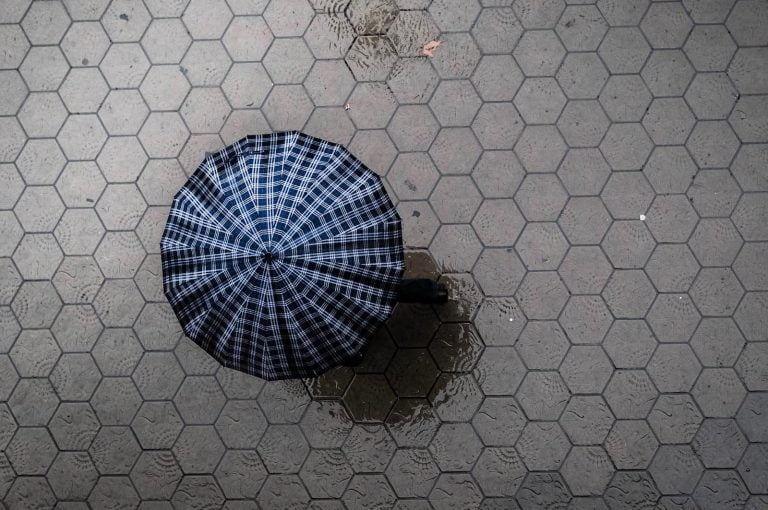Persian vs. Arabic — Similarities and Differences
We’re frequently asked what the difference between Persian and Arabic are — how similar they are, and whether knowing Persian helps learn Arabic, or whether knowing Arabic helps to learn Persian.
You might be curious what each language sounds like to the other, and what their relationships are with religion. Well, we’re here to put those questions to rest!
So here’s a guide to all the similarities and differences between Persian and Arabic: alphabet, pronunciation, sentence structure, and more.
Persian or Farsi? The most commonly used word is “Persian”, though people sometimes say Farsi. Usually by “Persian” I mean the way it’s spoken in Iran (and specifically the culturally dominant Tehrani accent). Sometimes I’ll specifically refer to the forms of Persian spoken in Afghanistan and Tajikistan as Dari or Tajik.

Contents
Overview of Persian Vs Arabic
Arabic and Persian are totally different languages, but both with a mostly common alphabet, overlapping vocabulary (nearly all going from Arabic to Persian), and with ties to Islam. The similarity level is a bit like that between English and French.
A speaker of either Persian or Arabic with no knowledge of the other could pick up a newspaper and see major words and roughly know what topic it was about, but not know what it was about in detail, nor be able to understand the details. And orally, it’d be a lost cause to understand what was happening at all.
For this analysis, we’ll consider Arabic to be “Modern Standard Arabic” (MSA) as opposed to a regional dialect. The dialects are closely related to MSA but have distinct variations in grammar, pronunciation, and vocabulary.
You might also like these articles about Persian & Arabic…
Persian vs. Arabic: The Alphabet/Script
When you look at Persian and Arabic script, someone who doesn’t know either language will think that they look the same.
This is largely true: modern Persian (in both Iran and Afghanistan) is written in the Perso-Arabic script, which is the Arabic script but with slight pronunciation modifications, plus a few extra letters.
In Tajikistan, where the language Tajik is the same as Persian (as spoken in Iran) but spoken with a different accent and Russian-influenced day-to-day vocabulary, the language is written in Cyrillic script, as Russian is.
For language learners, Cyrillic script can be both an advantage (because Cyrillic script is written with all its vowels!) and disadvantage (you won’t learn to read street signs or other printed text in Iran or Afghanistan).
See our guide on learning Persian outside Iran for a longer discussion on Cyrillic script and the differences between Tajik and Persian as it’s spoken in Iran.
Here’s every letter in the Persian and Arabic alphabets. Every letter in Arabic exists in Persian, but Persian has four extra letters, marked below. The pronunciation guide is for the most commonly-taught Tehrani/Shirazi accents of Persian.
| Name (Persian) | Letter (isolated) | Arabic/Persian |
| hamze | ء | In both |
| ʾalef | ا | In both, but pronounced in Persian like o in American Bob, and in Arabic like ar in the British car |
| be | ب | In both |
| pe | پ | Persian only, pronounced p |
| te | ت | In both |
| se | ث | In both, pronounced s in Persian, but th in MSA (although s in several dialects) |
| jim | ج | In both |
| che | چ | Persian only, pronounced ch |
| haa-ye jimi | ح | In both, pronounced as a hard H in Arabic, but a soft h in Persian (same as ه) |
| khe | خ | In both |
| daal | د | In both |
| zaal | ذ | In both, pronounced dh in Arabic, but as z in Persian (same as ز). In colloquial Arabic this is often pronounced z |
| re | ر | In both |
| ze | ز | In both |
| zhe | ژ | Persian only, pronounced like g in French rouge |
| sin | س | In both |
| shin | ش | In both |
| saad | ص | In both, pronounced s in Persian, but as hard S in Arabic |
| zaad | ض | In both, pronounced as hard D in Arabic, but as z in Persian (same as ز) |
| taa | ط | In both, pronounced as hard T in Arabic, but as regular t in Persian (same as ت) |
| zaa | ظ | In both, pronounced as hard DH in Arabic, but as z in Persian (same as ز) |
| ʿayn | ع | In both, in Arabic pronounced as guttural back-of-throat sound, and in Persian as a glottal stop (same as ء) |
| ghayn | غ | In both |
| fe | ف | In both |
| qaff | ق | In both, pronounced q in Arabic, but gh in Persian (same as غ) |
| kaaf | ک | In both |
| gaaf | گ | Persian only, pronounced g |
| laam | ل | In both |
| mim | م | In both |
| nun | ن | In both |
| vaav | و | In both, pronounced v in Persian vs w in Arabic |
| haa-ye do-cheshme | ه | In both |
| ye | ی | In both |
A few letters are pronounced differently in Persian across the regions, particularly between Afghanistan and the Tehrani/Shirazi accents. For example, Afghans tend to retain the qaff (ق) as pronounced in Arabic.
One interesting thing I noted in Arabic-speaking countries is that they letter they choose to express the “p” sound (e.g. in brand names or street signs) is a different invention, and not the one used in Persian.

Persian vs. Arabic Pronunciation
As you can see from the table above, Persian and Arabic pronounce the same letters differently.
Most notably, the “harder” and more “guttural” Arabic sounds are pronounced more gently in Tehrani/Shirazi Persian, or not pronounced at all.
The most notable pronunciation differences are (with letter names below in Arabic)
- Qaff (ق): This is often pronounced in Persian the same as a ghayn (غ)
- 3ayn (ع): This is pronounced as a hamze/glottal stop ()
- He (ح): This is softened to a he (ه)
- dhaal (ذ) and the (ث): In Persian pronounced z and s, with the names of the letters changed respectively
- Daad (ض), Zaad (ظ), Taa (ط), Saad (ص): These are respectively softened in Persian to be pronounced as z, z, t, and s.
You’ll notice, from this section and the previous, that there’s a lot of overlap in the way letters are pronounced in Persian. There are four different letters that are pronounced as a z!
So why even keep all those extra letters in Persian? Well, to confuse you when you’re spelling, of course. Also, they’re used for imported words from Arabic — of which there are many.
Spoken Arabic accents vary distinctly by region when speaking colloquially. The “softest” of all accents are Egyptian and Lebanese accents, and many Arab speakers from around the Arabic-speaking world volunteer that they like the way Egyptians and Lebanese people speak.
(See our guide to the diverse range of Arabic dialects here.)
But Persian is less distinctly pronounced than even Egyptian and Lebanese dialects. Persian at times sounds like French. In fact, many Persian migrants to France have excellent French accents and have much less trouble pronouncing French than they Persian migrants to English-speaking countries do with English.
A more subtle distinction in pronunciation is in emphasis and intonation.
Many Arabic multi-syllabic words have their emphasis on the second-to-last syllable in a word, sometimes earlier. By contrast, Persian prefers emphasis on the last syllable. Persian speakers even change the emphasis of borrowed words from Arabic. For example
- “School” (مدرسة): in Arabic is madrasah, and in Persian is madreseh
- “Pen” (قلم): in Arabic is qalam and in Persian is qalam
Finally, intonation. It’s quite a large subject on its own, but suffice it to say that Persian has a different kind of tone to any form of spoken Arabic I’ve heard.
Persian and Arabic — Vocabulary Overlap
Persian has a lot of Arabic words in it. It varies a lot by style and format, but it’s anywhere up to 40%, in that in a full Persian dictionary, some 40% of all words are of Arabic origin.
In everyday conversation, there’s very little — maybe 10-20%. I.e. in a sentence like the following:
“I want a kilo of red apples please. I love apples so much! How much is it? Four dollars? Wait, that’s too much!”
لطفاً یک کیلو سیب قرمز می خواهم. من سیب را خیلی دوست دارم! چند است؟ چهار دلار؟ صبر کنید ، این خیلی زیاد است
In that sentence in Persian there are 23 words, of which three are of Arabic origin (لطفاً for “please”, for صبر “wait”, and for زیاد “too much”). So that’s 13% and matches my guess.
In printed text, some analyses place it at 25%. And if you look through a dictionary (not frequency-weighted), you’ll find that 40% of all words useable in Persian are of Arabic origin.
Interestingly, there’s very little that goes the other way — very few Persian words that end up in Arabic (and if they do, it’s only in colloquial Arabic, not the official language).
This proportion might sound like a lot, but it doesn’t mean that an Arabic speaker can listen to someone speaking Persian and remotely catch the drift of what’s going on, even with experience.
It’s a bit like French and English. English has a lot of words of Latin origin, mostly imported via French.
Assuming you know nothing of French (or other Latin languages) you might look at a random paragraph like this one that I picked out from Le Monde and you may recognise the words I’ve put in bold:
L’appareil a disparu des radars. Il s’est abîmé dans l’eau à proximité de la côte. Moins d’une heure plus tard, les premiers secours arrivent sur zone. Ils repêchent des débris de carlingue, des cadavres déchiquetés, des affaires personnelles...
Le Monde, 10/11/2019
And think “OK something about an apparel on a radar… proximity… premiers something a zone, cadavers OMG? Personal affairs? What happened to their apparels??”
That’s in print. When spoken, because of accent and pronunciation differences, you probably won’t catch it at all.
However, knowing one set of vocabulary — either Arabic or Persian — definitely helps with learning the other.
Persian vs Arabic Grammar
Grammar is where Persian and Arabic are completely different. Most explanations of this give academic descriptions of the origins of Persian and Arabic, but I’ll try to describe it in everyday terms (which is my cup of tea anyway).
Suffice it to say that everything is different between Persian and Arabic grammar, from the concept of verbs, to grammatical gender, to plurals, to cases, to tone, and more… everything.
- Verbs in Arabic and Persian are totally different — Arabic has a trilerate root structure where many words are interrelated; Persian verbs are more like French, free-standing verbs that are conjugated alone
- Sentence order/structure is different between Arabic and Persian (Arabic is subject-verb-object; Persian is subject-object-verb).
- Grammatical gender: Arabic has gendered nouns and uses gender for agreement with plurals, whereas Persian doesn’t have grammatical gender at all
- Plurals: Arabic words change to make plural form, and plural agreement is a little weird; plurals are extremely straightforward in Persian
- Cases: Standard Arabic has grammatical “cases” and Persian doesn’t (neither does colloquial Arabic)
- Formality: Persian has a formal tone (similar to the French vous); Arabic doesn’t
- Written/spoken: Formal Modern Standard Arabic is very different to colloquial spoken Arabic; Persian is spoken much as it’s written (or at least it’s far closer)
Persian and Arabic grammar are as different as can be. The difference is, again, similar in degree to the difference between French and English.
There are some differences between spoken and written Persian — see our guide for more details here.
Does knowing Arabic (or Persian) help with learning Persian (or Arabic)?
Yes, knowing either Persian or Arabic definitely helps with learning the other! It’s not a huge advantage — it’s mostly a vague sense of familiarity with some words.
In this case, I’d liken the similarity more to knowing English if learning German (not the other way around, because Germans I meet seem to all already know English, bless their highly educated souls).
Take a phrase like “Can you give me a glass of water please?” or “I live in the big white house”. Those become “Kannst du mir ein Glas Wasser geben bitte?” and “Ich wohne in dem großen weißen Haus”. Even though the languages are totally different, there are similar things that make one reminiscent of the other, if vaguely.
Between Persian and Arabic the differences are similar — a lot is reminiscent, even though it’s different and used differently.
The main ways it helps to know either Persian or Arabic to learn Arabic or Persian are
- Knowing Persian or Arabic and learning the other gives you a jump start on reading/writing, as Persian and Arabic alphabets are mostly the same. The first obstacle to learning either Arabic or Persian is the alphabet. It’s a new character set, with different rules (no short vowels!) and written right-to-left. If you know one, once you learn the pronunciation differences (and the extra letters, if going from Arabic to Persian), you’re done.
- Knowledge of Persian or Arabic gives you a head-start in vocabulary because of the shared words. These can be everyday words, like greetings, through to professional words. The words are different, but a word in Persian or Arabic will remind you of the word in the other language —basically, you get a set of excellent mnemonics. It’s like the word souvenir in French, which most commonly is the word for “to recall”. It reminds you of the same borrowed word in English, which is means “a keepsake” (it also means this in French). Both words are used totally differently (e.g. to say “I don’t remember” you say “Je ne m’en souviens pas”, with an associated change in the pronunciation of souvenir) but it helps you remember.
- You have some advantage in pronunciation if you know Arabic or Persian and learn the other. Finally, even though the pronunciation is different, there are similar sounds in both languages. This is much more of an advantage if going from Arabic to Persian. If coming from Persian, you’ll still have to learn how to make your mouth make some unusual shapes to pronounce Arabic correctly.
Nonetheless, to communicate at any level, a speaker of Arabic or Persian would definitely have to spend time learning the other language. But they’d advance faster than someone without the same advantage, maybe 25-50% faster.
At the advanced levels, a lot of sophisticated professional vocabulary in Persian actually comes from Arabic. But in poetry, the Arabic learner would be lost deciphering Rumi without a lot of dedicated effort.
Which should you learn — Persian or Arabic?
This is a tough question because it forces you to answer questions like:
- Do you want to speak to people, as you would in Persian or an Arabic dialect, or learn to read texts, as you would if you learned MSA?
- Do you get pleasure out of learning a language that nearly no non-native speaker speaks, like Persian, or one that most non-native speakers don’t speak, like Arabic? (“native” excluding those who learn literary Arabic for religious purposes)
- What parts of the world do you want to travel to — the Middle East (Arabic), or Central Asia (Persian)?
For nearly all people I’d recommend learning Arabic, first in dialect form, and later MSA.
But if you learn Persian, I guarantee you’ll touch the hearts of many an unsuspecting Persian — even if you only learn a few hundred words.






What’s the difference?
Besides, I find this article entertaining, but a lot of water here.
The answer is yes. And the difference depends on who is the foreigner from your perspective.
Great article Dana! I would like to point out that you missed a huge component in your last section, and erroneously noted “most foreigners don’t speak” when referring to Arabic. Arabic is the language of the Quran and 1.8 billion people use it in some way or another for liturgical purposes, albeit sometimes with no real comprehension. That said, in whichever Muslim majority country you’re in, whether in Mali or Indonesia, you will meet many locals who speak Arabic with varying degrees of fluency. The other point to note is that Arabic is used as an official language by at… Read more »
Thanks, it was a hard concept to phrase succinctly, and I have reworded it. I meant to say that out of people who learn another language, most people don’t opt for Arabic. So learning Arabic makes you more unique than every other foreign language learner who’s learning (for the purpose of communication) French, Spanish etc.
Yes, the religious/cultural aspect of Arabic is important. I think if you’re learning it to become better acquainted with the Qu’ran then you’ve probably already decided to learn Arabic, and Persian isn’t a contender.
Wow, really great article! As a half-Persian growing up outside of Iran, I’ve spent most of my language study time trying to steadily improve my Persian, but more recently I’ve also been trying to learn a little Arabic. This article really helped clarify and put into context a lot of things I’ve been noticing in my initial Arabic study and how the language relates to Persian. Thanks so much, Dana!
There are some full or partial lookalikes (they look the same in some positions), e.g.
Super interesting. Thank you. I will add this in soon and credit you.
Hi! Loved this article! Just a quick correction: there’s actually 4 Arabic words in your sample Persian sentence. You missed the fourth one خیلی which, although it means ‘much; very’ in Persian, is derived from the Arabic “خیل” meaning ‘a herd of horses’.
That derivation may sound strange but it’s not actually super uncommon to get a quantity-related adverb from a plural noun! For example, the French and Italian words ‘trop’ and ‘troppo’ respectively mean ‘too much’ and are derived from the Frankish ‘thorp’, which meant ‘a collection of houses (like in a village)’!
Wow, that’s so interesting! I wouldn’t have guessed the relationship (even if I knew the Arabic word for “herd” which isn’t one I’ve had to learn). Thanks Mona.
Great article but the differences between English and German aren’t very big at all. They’re both Germanic languages and even though English has got lots of Latin inspired words, a lot of them also exist in German as in any other European language. Even if words sound very different in English and German, they can become very similar if you analyze the words. Learning German can still be hard though for an English speaker as there might be terms which are considered very archaic or old in the English language and therefore confusing. Also many German words which might have… Read more »
Very much appreciate your effort, Dana 🙏 Thanks in particular for parallels you present with European languages and Tajik.
I didn’t find a way to learn Persian from English/French/Russian that I speak and started with Arabic in Duolingo. Your article supports me in my effort. If there’s something to suggest.. an app or a website.. I would greatly appreciate.
Excellent article! I’d like to add some intriguing historical perspective. There is a striking parallel between English and Farsi. Old English and old Farsi were both quite complex grammatically. Old English was submerged by the Normal conquest, as French was superimposed. Old Farsi was submerged by the Arab conquest, as Arabic was superimposed. Eventually English replaced French, but in a form that was dramatically simpler grammatically, with a vocabulary half of which was now of French origin, and the French words had high status. Eventually Farsi replaced Arabic, but in a form that was dramatically simpler grammatically, with a vocabulary… Read more »